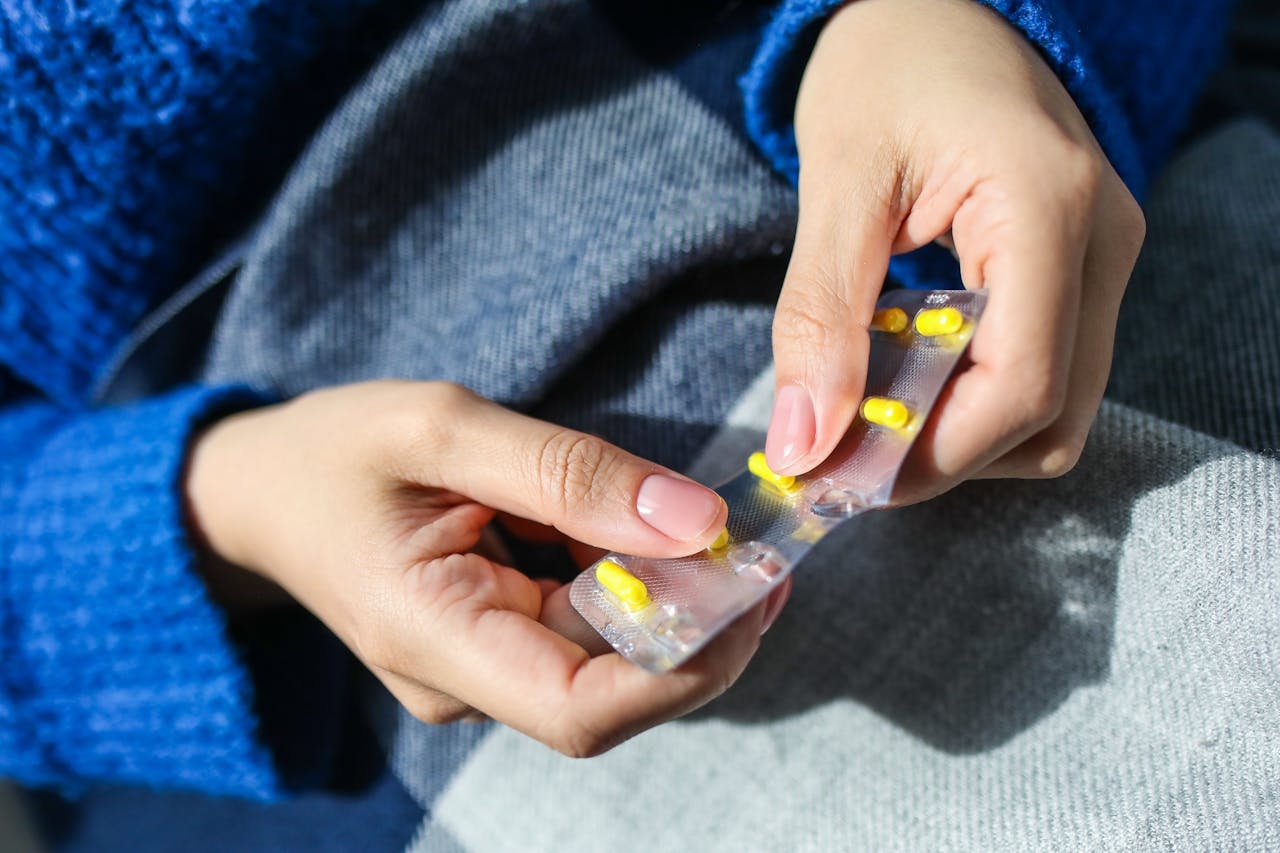
Pantoprazol sun 40 mg comprimidos gastrorresistentes efg

Инструкция по применению Pantoprazol sun 40 mg comprimidos gastrorresistentes efg
Introduction
Package Insert: Information for the Patient
Pantoprazol SUN 40 mg Gastrorresistant Tablets EFG
Pantoprazol
Read this entire package insert carefully before starting to take this medication, as it contains important information for you.
- Keep this package insert, as you may need to read it again.
- If you have any questions, consult your doctor, pharmacist, or nurse.
- This medication has been prescribed only for you, and you should not give it to others who have the same symptoms as you, as it may harm them.
- If you experience any adverse effects, consult your doctor, pharmacist, or nurse, even if they are not listed in this package insert. See section 4.
1. What is Pantoprazol and what is it used for
2. What you need to know before starting to take Pantoprazol
3. How to take Pantoprazol
4. Possible adverse effects
5. Storage of Pantoprazol
6. Contents of the package and additional information
1. What is Pantoprazol and what is it used for
Pantoprazolcontains the active substance pantoprazol.Pantoprazol is a selective proton pump inhibitor, a medication that reduces the amount of acid produced in your stomach. It is used for the treatment of diseases related to stomach acid and intestine.
Pantoprazol is used for:
Pantoprazol is used in adults and adolescents aged 12 years and older to treat:
- Reflux esophagitis. It is an inflammation of your esophagus (the tube that connects your throat to your stomach) accompanied by regurgitation of acid from your stomach.
Pantoprazol is used in adults to treat:
- Infection of a bacteria calledHelicobacter pyloriin patients with stomach and/or duodenal ulcer in combination with two antibiotics (eradication treatment). The goal is to get rid of the bacteria and thus reduce the likelihood of ulcer reappearance.
- Stomach and duodenal ulcers.
- Zollinger-Ellison syndrome and other conditions in which too much acid is produced in the stomach.
2. What you need to know before starting to take Pantoprazole
Do not take Pantoprazol
- if you are allergic to pantoprazole or any of the other ingredients of this medication (listed in section 6).
- if you are allergic to medications that contain other proton pump inhibitors.
Warnings and precautions
Consult your doctor, pharmacist, or nurse before starting to take Pantoprazol
- If you have severe liver problems. Inform your doctor if you have ever had liver problems. Your doctor will monitor your liver enzymes more frequently, especially when you are on long-term treatment with Pantoprazol. If liver enzyme levels increase, treatment should be interrupted.
- If you need to take nonsteroidal anti-inflammatory drugs (NSAIDs) continuously and take pantoprazol, as there is a higher risk of developing complications in the stomach and intestines. Any increased risk will be evaluated based on your personal risk factors, such as age (65 years or older), history of stomach or duodenal ulcers, or gastrointestinal bleeding.
- If you have reduced vitamin B12 reserves or risk factors for it and receive pantoprazol treatment for a long period. As all medications that reduce acid levels, pantoprazol may reduce vitamin B12 absorption.
- If you are taking HIV protease inhibitors such as atazanavir (for HIV treatment) at the same time as pantoprazol.
- If you are taking proton pump inhibitors such as pantoprazol, especially for more than a year, which may slightly increase the risk of hip, wrist, and spinal fractures. Inform your doctor if you have osteoporosis (reduced bone density) or are taking corticosteroids (which may increase the risk of osteoporosis).
- If you are taking Pantoprazol for more than three months, it is possible that blood magnesium levels may decrease. Low magnesium levels can cause fatigue, involuntary muscle contractions, disorientation, seizures, dizziness, increased heart rate. If you experience any of these symptoms, see your doctor immediately. Low magnesium levels can also cause a decrease in potassium and calcium levels in the blood. Your doctor may decide to perform regular blood tests to monitor magnesium levels.
- If you have ever had a skin reaction after treatment with a similar medication to Pantoprazol for reducing stomach acid. If you experience a skin rash, especially in sun-exposed areas, consult your doctor as soon as possible, as it may be necessary to interrupt Pantoprazol treatment. Remember to mention any other symptoms you may notice, such as joint pain.
- If you are scheduled to have a specific blood test (Cromogranin A).
Inform your doctor immediately, before or after taking this medication, if you notice any of the following symptoms, which may be signs of more serious underlying conditions:
- Unintentional weight loss
- Vomiting, particularly if repeated
- Blood in vomit: may appear as a dark brown powder in your vomit.
- If you notice blood in your stools, which may appear black or melena
- Difficulty swallowing, or pain when swallowing
- Pale appearance and feeling of weakness (anemia)
- Chest pain
- Stomach pain
- Severe or persistent diarrhea, as this medication has been associated with a small increase in infectious diarrhea.
Your doctor will decide if you need additional testing to rule out cancer, as Pantoprazol may alleviate cancer symptoms and potentially delay diagnosis. If your symptoms persist despite treatment, further investigations will be performed.
If you take Pantoprazol for an extended period (more than a year), your doctor may regularly monitor you. You should inform your doctor of any new or unexpected symptoms and/or events each time you attend your consultation.
Children and adolescents
Pantoprazol use is not recommended in children, as it has not been tested in children under 12 years old.
Other medications and Pantoprazol
Inform your doctor or pharmacist if you are taking, have taken recently, or may need to take any other medication, including over-the-counter medications.
Pantoprazol may affect the efficacy of other medications, so inform your doctor if you are taking:
- Medications such as ketoconazole, itraconazole, and posaconazole (used to treat fungal infections), or erlotinib (used to treat certain types of cancer), as Pantoprazol may make these and other medications less effective.
- Warfarin and phenprocoumon, which affect blood clotting. You may need additional monitoring.
- Medications used to treat HIV infection, such as atazanavir.
- Methotrexate (a chemotherapy medication used at high doses to treat cancer and psoriasis). If you are taking high-dose methotrexate, your doctor may temporarily interrupt Pantoprazol treatment.
- Fluvoxamine (used to treat depression and other psychiatric conditions) if you are taking fluvoxamine, your doctor may reduce your dose.
- Rifampicin (used to treat infections)
- St. John's Wort (Hypericum perforatum) (used to treat mild depression)
Pregnancy, breastfeeding, and fertility
There is insufficient data on the use of pantoprazole in pregnant women. Pantoprazole has been excreted in human breast milk.
If you are pregnant, breastfeeding, believe you may be pregnant, or plan to become pregnant, consult your doctor or pharmacist before using this medication.
You should only use this medication if your doctor considers the benefits for you to be greater than the potential risk to the fetus or baby.
Driving and operating machinery
Pantoprazol has no influence or insignificant influence on the ability to drive or operate machinery. Do not drive or operate machinery if you experience adverse effects such as dizziness or blurred vision.
Pantoprazol SUN contains sodium:
This medication contains less than 1 mmol of sodium (23 mg) per tablet; it is essentially "sodium-free".
3. How to Take Pantoprazole
Follow exactly the administration instructions of this medication as indicated by your doctor. In case of doubt, consult your doctor or pharmacist again.
Administration form:
Take the tablets 1 hour before meals without chewing or breaking them and swallow them whole with water.
The recommended dose is:Adults and adolescents 12 years and older:
Treatment of esophagitis by reflux:
The usual dose is 1 tablet per day. Your doctor may indicate an increase to 2 tablets per day. The treatment time for esophagitis by reflux usually ranges from 4 to 8 weeks.Your doctor will indicate for how long you should take this medication.
Adults:
Treatment of an infection with a bacteria called Helicobacter pylori in patients with stomach and/or duodenal ulcer in combination with two antibiotics (eradication treatment).
1 tablet twice a day plus the 2 antibiotic tablets, either amoxicillin, clarithromycin, and metronidazole (or tinidazole), each must be taken twice a day with your pantoprazole tablet. Take the first pantoprazole tablet 1 hour before breakfast and the second pantoprazole tablet 1 hour before dinner. Follow your doctor's instructions and make sure to read the antibiotic prospectuses.
The treatment duration is usually 1 to 2 weeks.
Treatment of stomach and duodenal ulcers:
The usual dose is 1 tablet per day. The dose may be doubled by your doctor. Your doctor will indicate for how long you should take this medication. The treatment duration for stomach ulcers is usually 4 to 8 weeks. The treatment duration for duodenal ulcers is usually 2 to 4 weeks.
Long-term treatment of Zollinger-Ellison syndrome and other conditions in which there is an increase in stomach acid secretion:
The initial recommended dose is 2 tablets per day.
Take the 2 tablets 1 hour before a meal. Your doctor may then adjust your dose depending on the amount of stomach acid you produce. If you are prescribed more than 2 tablets per day, you should take the tablets twice a day.
If you are prescribed more than 4 tablets per day, you will be told exactly when to stop treatment.
Patients with kidney problems:If you have kidney problems, you should not take pantoprazole for the elimination ofHelicobacter pylori
Patients with liver problems
- If you have severe liver problems, you should not take more than 1 tablet of 20 mg of pantoprazole per day (for this case, tablets of 20 mg of pantoprazole are available).
- If you have moderate or severe liver problems, you should not take pantoprazole for the elimination ofHelicobacter pylori.
Use in children and adolescents:This medication is not recommended for use in children under 12 years old.
If you take more Pantoprazol than you should
Inform your doctor or pharmacist or call the Toxicological Information Service, phone 91 562 04 20, indicating the medication and the amount ingested. No symptoms of overdose are known.
If you forgot to take Pantoprazol
Do not take a double dose to compensate for the missed doses. Take your next dose as usual.
If you interrupt the treatment with Pantoprazol
Do not stop taking these tablets without consulting your doctor or pharmacist first.
If you have any other doubts about the use of this medication, ask your doctor, pharmacist, or nurse.
4. Possible Adverse Effects
Like all medicines, this medicine may cause side effects, although not everyone will experience them.
If you experience any of the following side effects, stop taking these tablets and inform your doctor immediately or contact the nearest hospital's emergency service:
- Severe allergic reactions (rare, may affect up to 1 in 1000 people): swelling of the tongue and/or throat, difficulty swallowing, hives (urticaria), difficulty breathing, allergic swelling of the face (Quincke's edema/angioedema), intense dizziness with very rapid heartbeats and excessive sweating.
- Severe skin alterations (unknown frequency, cannot be estimated from available data): blisters on the skin and rapid deterioration of overall condition, erosion (including mild bleeding) of eyes, nose, mouth/lips, or genitals, or skin sensitivity/eruption, particularly in exposed skin areas to light/sun, and may also have joint pain or flu-like symptoms, fever, swollen lymph nodes (e.g., in the armpit) and blood tests may show changes in certain white blood cells or liver enzymes. (Stevens-Johnson syndrome, Lyell syndrome, Multiform erythema, Subacute cutaneous lupus erythematosus, Pharmacological reaction with eosinophilia and systemic symptoms (DRESS), Photosensitivity).
- Other serious conditions (unknown frequency, cannot be estimated from available data):yellow discoloration of the skin and the white of the eyes (severe liver cell damage, jaundice) or fever, hives, enlarged kidneys with occasional pain while urinating and lower back pain (severe kidney inflammation) possibly leading to renal failure.
Other side effects are:
-Frequent(may affect up to 1 in 10 people):
Benign polyps in the stomach
- Infrequent(may affect up to 1 in 100 people):
- Dizziness, vertigo, diarrhea, sensation of dizziness, vomiting, bloating and gas, constipation, dry mouth, abdominal pain and discomfort; hives on the skin, exanthema, rash, tingling; feeling weak, tired, or generally unwell, sleep disturbances, fractures of the hip, wrist, or spine
- Rare(may affect up to 1 in 1000 people)
Loss or distortion of taste, visual disturbances such as blurred vision; urticaria, joint pain, muscle pain, weight changes, increased body temperature; high fever, swelling in the extremities (peripheral edema), allergic reactions, depression, gynecomastia in men.
- Very rare (may affect up to 1 in 10,000 people)
disorientation
- Unknown frequency
Illusion, confusion (especially in patients with a history of these symptoms),
decreased sodium levels in the blood, decreased magnesium levels in the blood (see section 2), sensation of tingling, pinching, numbness, burning, or numbness; skin rash, possibly with joint pain, Inflammatory bowel disease causing persistent watery diarrhea
Side effects identified through blood tests:
- Infrequent(may affect up to 1 in 100 people)
increased liver enzymes
- Rare(may affect up to 1 in 1000 people)
increased bilirubin; increased levels of fats in the blood; acute decrease in the circulation of granular white blood cells, associated with high fever
- Very rare(may affect up to 1 in 10,000 people)
reduction in the number of platelets that could cause bleeding or more frequent bruising; reduction in the number of white blood cells, which could lead to more frequent infections; abnormal coexisting reduction in the number of red and white blood cells, as well as platelets.
- Unknown frequency(cannot be estimated from available data)
decreased sodium, magnesium, calcium, or potassium levels in the blood (see section 2).
Reporting of side effects
If you experience any type of side effect, consult your doctor or pharmacist, even if it is a possible side effect that does not appear in this leaflet. You can also report them directly through the Spanish System for Pharmacovigilance of Medicines for Human Use: https://www.notificaram.es. By reporting side effects, you can contribute to providing more information on the safety of this medicine.
5. Storage of Pantoprazol SUN 40 mg gastro-resistant tablets
Keep this medication out of the sight and reach of children.
Do not use this medication after the expiration date that appears on the packaging after CAD. The expiration date is the last day of the month indicated.
This medication does not require special storage conditions.
Container: Pantoprazol SUN must be used within 100 days after the first opening.
Medicines should not be thrown down the drains or in the trash. Dispose of the containers and medicines you no longer need at your local SIGRE collection point.If in doubt, ask your pharmacist how to dispose of the containers and medicines you no longer need. By doing so, you will help protect the environment.
6. Content of the packaging and additional information
Composition of Pantoprazol SUN 40 mg gastro-resistant tablets
The active ingredient ispantoprazol. Each gastro-resistant tablet contains 40 mg of
pantoprazol (as pantoprazol sodium sesquihydrate).
The other components are:
Tablet core: anhydrous sodium carbonate, mannitol, crospovidone type A, hydroxypropyl cellulose, microcrystalline cellulose, calcium stearate.
Sub-coating: hypromellose, propylene glycol, povidone K30, titanium dioxide (E171), yellow iron oxide (E-172).
Enteric coating:copolymer of methacrylic acid and ethyl acrylate (1:1), triethyl citrate, sodium lauryl sulfate, titanium dioxide (E-171), talc, yellow iron oxide (E-172).
Appearance of Pantoprazol SUN 40 mg gastro-resistant tablets and contents of the package
Yellow-coated enteric-coated tablets, oval, biconvex, and smooth on both sides.
This medicine is presented in blister packs of 7, 14, 15, 28, 30, 50, 56, 60, 90, 98, 100, and 500 tablets (clinical pack) or HDPE bottles with 60 or 100 gastro-resistant tablets. The bottle contains a desiccant bag with silica gel. DO NOT EAT the contents of the bag. Only some package sizes may be marketed.
Holder of the marketing authorization and responsible for manufacturing
Holder of the marketing authorization
Sun Pharmaceutical Industries Europe B.V.,
Polarisavenue 87,
2132JH Hoofddorp, Netherlands
Responsible for manufacturing
Sun Pharmaceutical Industries Europe B.V.
Polarisavenue 87
2132 JH Hoofddorp
Netherlands
or
TERAPIA S.A.
124 Fabricii Street.,
400632 Cluj Napoca
Romania
or
Alkaloida Chemical Company Zrt.
H-4440, Tiszavasvári,
Kabay János u. 29.
Hungary
Local representative
Sun Pharma Laboratorios, S.L.
Rambla de Catalunya 53-55
08007 Barcelona. Spain
Phone:+3493 342 78 90
This product is authorized in the member states of the EEA with the following names:
FrancePantoprazole SUN 40 mg, gastro-resistant tablet
GermanyPANTOPRAZOL BASICS 40 mg gastro-resistant tablets
ItalyPANTOPRAZOLO SUN
PolandRanloc
SpainPantoprazol SUN 40 mg gastro-resistant tablets EFG
Date of the last review of this leaflet:October 2023
The detailed and updated information on this medicine is available on the website of the Spanish Agency for Medicines and Medical Devices (AEMPS) http://www.aemps.gob.es/

Сколько стоит Pantoprazol sun 40 mg comprimidos gastrorresistentes efg в Испании в 2025 году?
Средняя цена на Pantoprazol sun 40 mg comprimidos gastrorresistentes efg в сентябрь, 2025 года составляет около 17.48 евро. Финальная стоимость может зависеть от региона, конкретной аптеки и рецептурного статуса. Для точной информации лучше проверить онлайн или в ближайшей аптеке.
- Страна регистрации
- Средняя цена в аптеках17.48 EUR
- Активное вещество
- Требуется рецептДа
- Производитель
- СоставCarbonato de sodio anhidro (5,000 mg mg), Manitol (e-421) (14,187 mg mg), Manitol (e-421) (22,000 mg mg), Carbonato de sodio anhidro (5,000 mg mg), Propilenglicol (2,728 mg mg), Laurilsulfato de sodio (0,274 mg mg), Propilenglicol (2,000 Porcentaje peso/peso mg)
- Информация носит справочный характер и не является медицинской рекомендацией. Перед приемом любых препаратов проконсультируйтесь с врачом. Oladoctor не несет ответственности за медицинские решения, принятые на основе этого контента.
Консультация врача онлайн по поводу Pantoprazol sun 40 mg comprimidos gastrorresistentes efg
Нужна консультация врача?
Получите онлайн-консультацию по вопросам приема, получения рецепта и альтернативных препаратов.















